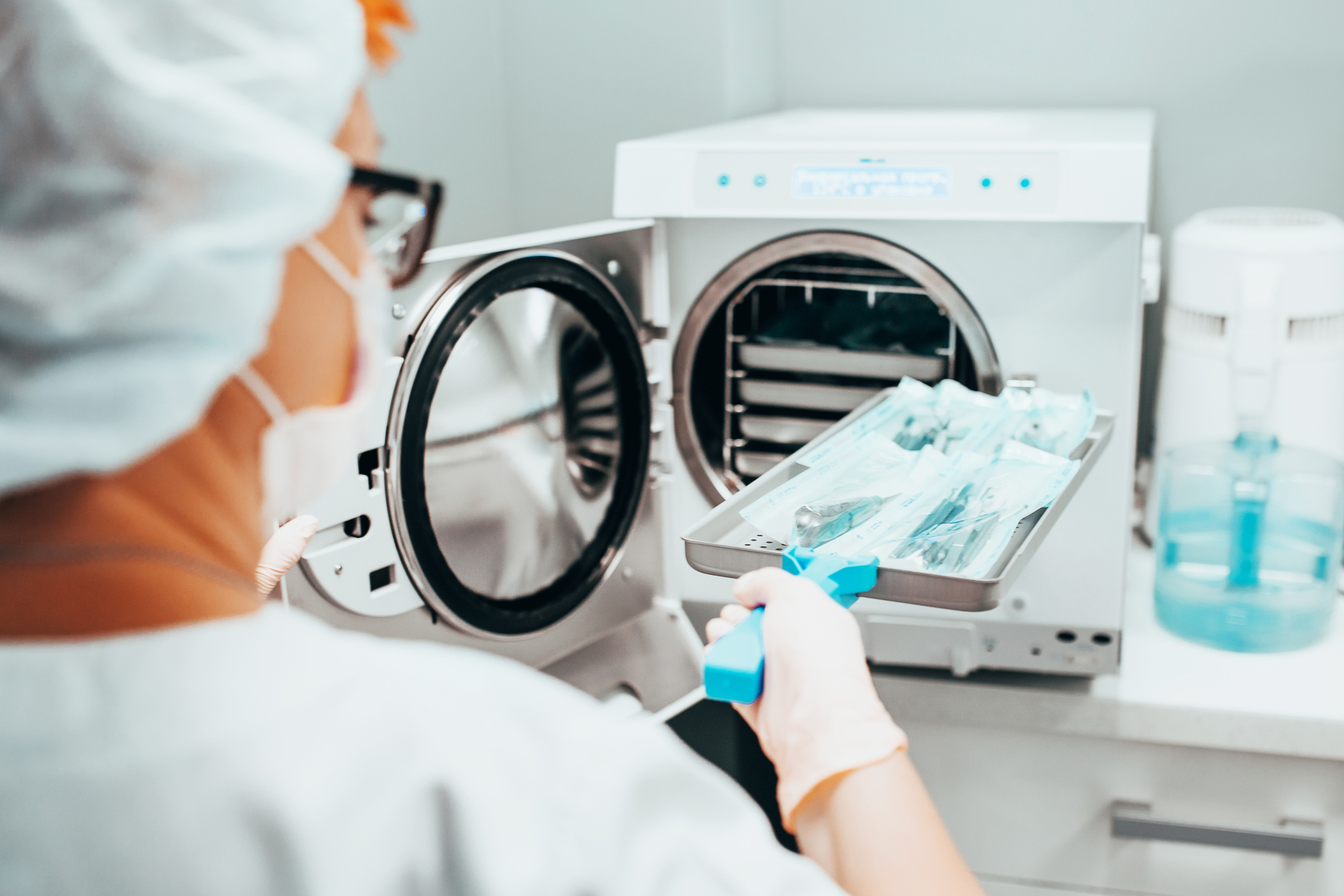Understand Impact of Changes in EO Sterilization
Are you up-to-date on the current state of changes in ethylene oxide (EtO or EO) sterilization? A recent requirement to lower EO gas concentration in EO cycles may have several consequences. This could impact timelines for requalification of EO cycles and force a new validation at lower gas concentrations, development of new cycles, and costs of EO sterilization changes. Being informed about the latest developments is also important for the success of your medical device process validation.
In February 2019, the U.S. Environmental Protection Agency (EPA) closed a large EO sterilization facility in Illinois. The closure and new mandates to lower emissions resulted in some product shortages of EtO sterilization medical devices. The COVID-19 pandemic, which increased demand for many medical devices, further impacted the supply chain in the U.S.
Recently, EPA updated regulations under the Clean Air Act that limit the amount of EO that certain industries can release into the outdoor air. EPA has proposed new requirements for 86 commercial sterilizers that if implemented will reduce the amount of EO coming from commercial sterilizers by 80%.
As your sterilizer works to meet the updated mandates, it will be important for you to stay informed and ensure your sterilization process is maintained.
Continue reading to learn more about:
- Ethylene oxide sterilization of medical devices
- Pros and cons of EO sterilization
- Current trends in EO sterilization validation
- The future of EO sterilization
- Updates to the sterilization requalification process
- How you can easily stay informed about new EO validation mandates
EO is the Go-To Sterilization Method for Medical Devices. Is it Right for You?
According to a U.S. Food and Drug Administration (FDA) literature review, approximately fifty percent of sterile medical devices are sterilized with EO. That accounts for over 20 billion medical devices sold in the U.S. annually.1
EO sterilization is a low-temperature gaseous process that effectively kills a broad range of microorganisms, including bacteria, viruses, spores, and other microorganisms remaining on the device from manufacturing and packaging processes. Ethylene oxide sterilization of medical devices is popular because it penetrates complex devices and is compatible with materials commonly used in medical devices, including most plastics.
As a point of comparison, gamma irradiation, the second most common medical device sterilization method, while faster, is known to cause material discoloration and can impact the stability of plastic components on the device. This means radiation is not a viable sterilization option for all medical devices.
Ethylene oxide sterilization remains a popular choice among medical device companies. If EO may be right for your product, consider hiring a validation consultant to guide your validation from planning to execution.
Advantages and Disadvantages of EO Sterilization
Advantages
- Suitable for heat-sensitive and moisture-sensitive products because it is performed at low temperatures.
- Compatible with various materials commonly used in medical devices and pharmaceutical products, such as plastics, rubbers, and metals.
- Allows for terminal sterilization. Medical devices and other products can be sterilized while contained in their final packaging.
Disadvantages and how to deal with them
- Residuals remain on sterilized items, which can be harmful if not properly removed.
- Sterilization validation experts can assist in implementing EO residue reduction methods by lowering gas concentration and adding air washes at the end of the cycle.2
- Longer cycle times compared to other sterilization methods, which can impact manufacturing throughput.
- Investing in robust sterilization validation including parametric release can help to reduce long cycle times.
- Environmental concerns as EO is a hazardous air pollutant and can contribute to air pollution if not properly controlled.
- The EPA has taken several actions to reduce EO emissions and protect public health.3
Develop Green Process Strategies for Safer Medical Devices
The latest trends in EO sterilization focus on ensuring lower gas concentration to address concerns about potential health and environmental risks. Several leading contract sterilization companies have already partnered with the FDA to devise new process strategies that reduce harmful emissions without disrupting the medical device market.1 Sterilizing devices by EO is not going away anytime soon considering healthcare facilities rely on EO processes to sterilize medical devices. Companies specializing in emission controls have begun offering integrative solutions to EO sterilization facilities.4 Emissions are expected to decrease as more companies adopt green technology.
The level of EO residue that remains on devices following a sterilization process is also a safety concern. Improvements to analytical techniques have made It possible to monitor EO residues with greater sensitivity and accuracy to ensure the continued safety of end-consumers. Many testing facilities today offer EO residue monitoring which can be incorporated into your sterilization validation protocol.
Advancements to EO emission reduction efforts and residue mitigation have maintained EO sterilization as the leading chemical sterilant for the medical device industry. Our consultants can partner with sterilization and testing facilities to provide a custom validation of the sterilization process and downstream quality monitoring of your product.
Changes contract sterilization companies are implementing:
- Use of advanced analytical techniques. To quantify residual EO and its byproducts on medical devices and other products, techniques such as GC/MS, LC/MS, and FTIR spectroscopy are used. They provide accurate and sensitive detection of EO residues, ensuring that products have low levels of EO.5
- Implementing combination bioburden reduction methods. Pre-cleaning procedures can be performed to reduce EO exposure time to sterility and reduce the microbial load on products prior to sterilization. This can significantly impact sterilization dwell times.6
- Customized validation protocols for specific products and materials. This is to ensure that the sterilization process is tailored to the specific needs of the product. This can improve the safety and efficacy of the sterilization process and ensure that the product is not damaged or degraded during sterilization.
EPA Advocates for Sterilization Methods with Low-To-No Emissions
Since the EPA designated EO as a hazardous air pollutant in 2019, its use has been made more stringent. However, significant efforts have been made by regulatory agencies and contract facilities to ensure environmental and occupational safety.
The FDA released a press announcement in 2022 detailing their partnership with sterilization facilities to improve the safety of their processes in response to the EPA’s regulation review.1,3 The FDA is working with the EPA to develop processes and procedures to ensure the safety of medical devices and reduce product shortages that are an unintended consequence of the enforcement of these new regulations.
The FDA is committed to reducing what they call an over-reliance on EO for medical devices. In July 2019, they announced an innovation challenge to identify new sterilization methods and technologies with the goal to reduce EO emissions from the sterilization process to as close to zero as possible. The industrial sterilization field is therefore continually improving to meet market and safety needs.
Our EO sterilization validation experts stay abreast of regulatory updates and can provide guidance on the most current technologies. Three main regulations must be followed by facilities that use EO for sterilization:
- National Emission Standards for Hazardous Air Pollutants (NESHAP) — to put control measures in place to limit the release of EO and its reaction products from sterilization plants. Examples of these measures include deploying air pollution control devices and putting leak detection and repair systems in place.7
- Risk Management Program (RMP) — to identify and mitigate potential risks to public health and the environment. The RMP is aimed at facilities that use EO above certain thresholds. The RMP must include an accident prevention program, emergency response plan, and a hazard assessment that identifies potential accident scenarios.8
- Clean Air Act Amendments (CAAA) — to assess any potential health concerns linked to hazardous air pollutant emissions, including EO, and set guidelines to safeguard public health.
You can get the latest on Ethylene Oxide Sterilization for Medical Devices on the FDA’s website.
Looking for a medical device regulatory expert?
New Mandatory Lower Gas Concentration for EO Sterilization Cycles
While medical device manufacturers are used to annual sterilization requalification of their EO sterilization cycles, the next two years may be challenging as contract sterilizers work to reduce EO concentration in their cycles.
As your sterilizer works to meet the updated mandates, moving forward, you will need to validate a new EO sterilization cycle for your device that uses a lower gas concentration.
Due to facility closures and backlogs, you may even need to switch sterilizing facilities to avoid delays in getting your product to end-users. This requires additional costs and time to validate the EO process at alternate facilities.
However, as you know, it’s not as simple as merely changing sterilizing facilities. PMA and 510(k) devices may have requirements to submit sterilization changes to the FDA. The FDA announced a pilot program to allow sterilization providers to submit a master file when making certain changes between sterilization sites or changes to sterilization processes that utilize reduced EO concentration. This program will help medical device companies with PMAs of Class III products as they may reference the Master File in a post-approval report.
You should reach out to your sterilizing facility as soon as possible to see what their plans are for meeting these new requirements. Failure to do so may result in added expense to the cost of your product and extend your timeline.
QA Consulting Provides Medical Device Sterilization Expertise
Understanding the new EO sterilization validation mandates can impact product speed to market. Medical device sterility regulations have become more strict and regulatory agencies like the FDA require enhanced risk assessments for managing product sterility.2 We keep a pulse on what is happening with ethylene oxide sterilization of medical devices.
Our team has over 100 years of combined experience in managing quality systems and helping medical device companies grow successfully. We stay up-to-date with the ever-changing market and provide you with the latest information on medical device regulations so you can focus on operational needs.
No matter where you are in the product lifecycle, it is never too early to start developing sterilization protocols and identifying a method and facility that meets your organization’s product needs and quality requirements.
Need to talk to a microbiology expert to revisit your product’s sterilization process and protocols?
References:
- Commissioner O of the. FDA Continues Efforts to Support Innovation in Medical Device Sterilization. FDA. Published March 8, 2022. Accessed May 22, 2023.
- Health C for D and R. Sterilization for Medical Devices. FDA. Published online July 4, 2023. Accessed May 22, 2023.
- US EPA O. What EPA Is Doing to Address Ethylene Oxide (EtO) and to Learn More About the Chemical. Published August 14, 2018. Accessed May 22, 2023.
- Picarro and LESNI Partner to Deliver Comprehensive Ethylene Oxide Monitoring Solutions to Sterilization Facilities Worldwide. Accessed May 22, 2023.
- Mendes G, Brandão T, Silva C. Ethylene oxide (EO) sterilization of healthcare products. In: Sterilisation of Biomaterials and Medical Devices, Lerouge S, Simmons A, Eds. Woodhead Publishing Series in Biomaterials. Woodhead Publishing; :71-96. doi:10.1533/9780857096265.71
- Weiss S, Cogdill P, Hansen JM. Use of Overkill Half-Cycle Qualification Data to Support Reduction of Exposure Time in Validated Ethylene Oxide Sterilization Cycles. Biomed Instrum Technol. 2020;54(s1):40-44. doi:10.2345/0899-8205-54.s3.40
- National Emission Standards for Hazardous Air Pollutants (NESHAP) Compliance Monitoring. Energy.gov. Accessed May 22, 2023.
- US EPA O. List of Regulated Substances under the Risk Management Program Program. Published July 1, 2015. Accessed May 22, 2023.






